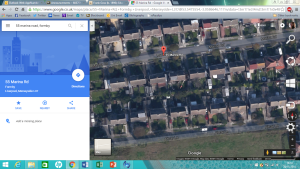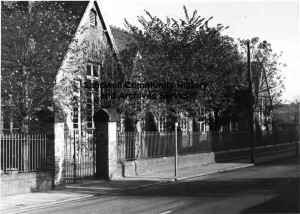Maud Clarke (b. 1887): Education and Schooling
‘Schools were very different to what they are today’ (Maud Clarke, p. 5)
We begin to read about Maud’s experiences regarding education very early on in her memoir, as it is an aspect of her life that spans from early childhood into her adulthood and subsequent career path. Due to the sheer amount of detail surrounding her recollection of her education, in this blog post I will be focusing solely on her education as a child, and less about her work in education, which I will be addressing in a second blog post on ‘Teaching.’
Maud does not write much about the education available for wealthy families with children, instead writing that ‘ordinary children’ (Clarke, p. 5) went to Dame and Board schools, which they began attending at the age of five after the Education Act was passed in 1870, nearly twenty years before Maud was born. She details her education before attending the local Board School, which she even admits had a significant drain on the families income;
At the age of four, I went with my six year old brother to a Dame School, which was a large house owned by a clever lady. One large room was used as a schoolroom, for a few small boys and girls who each paid sixpence a week for their tuition. (Clarke, p. 5-6)

This part of her memoir particularly stood out to me, as I remember something similar from my own childhood, learning to read, write and count before attending my first school, with the help of my neighbour, a retired teacher; Mrs Hayworth. This similarity between myself and Maud was unexpected, but it suggests to me that the value of education and having a head start in life was as important to her parents as it was mine.

Maud never states the name of the schools she attended during her childhood, yet from research I can narrow it down to one of two schools that she might have attended. She states that the schools were ‘newly built,’ (Clarke, p. 6) therefore it was possible that the schools were either Tipton Green, built in 1880 or Bloomfield, built in 1891, as they were both situated near to thirty minutes away from her home address.
From research on ancestry websites, I can also say that at the time of the 1901 census, Maud was a pupil at Dunmarklyn Private School for girls. This transfer into higher class education highlights just how important she felt her education was, and due to her family’s large size and with only her Father bringing the money into her family, there was a possibility that she was able to obtain a scholarship to attend the school and to fund her living quarters. This assumption that she was away from her family is supported by her memoir, where she states that; ‘there were no open-days for parents.’ (Clarke, p. 11)
Maud talks about the uniform that she and her siblings and classmates wore whilst attending the Board School, stating that the children were always;
warmly clad in thick wool dresses, covered by highly starched white cotton pinafores, heavy shoes and home-knitted black wool stockings. Most shoes had a second toe-cap of steel as a further protection. (Clarke, p. 8)
This implies that although the education was free, the cost to parents to make the clothes for their children would often be more expensive, especially with multiple children to clothe, and with the lack of heating in schools, children had to be dressed in many different layers to prevent colds and other illnesses.

‘School hours were from 9am to 12pm with a break for dinner (never called lunch) and again from 2pm to 4.30pm,’ (Clarke, p. 9) a very long day for the students, who had often never experienced something as structured as a school day before. Whilst in school, Maud remembers how she learnt to sew and darn patterns and clothing, as girls usually were taught more domestic activities. They also learned nursery rhymes, yet had no time for religious teaching. The girls used pencils to work with, sometimes a slate with chalk, and Maud wrote about being able to use pens when she entered the Girls School aged seven.
The lessons that the boys and girls were taught often differed in content; boys were taught more practical skills ‘to equip boys for earning a living,’ (Cryer) and girls were often taught skills that were more applicable to home-making, preparing them for family life. This meant that the two genders were often segregated from the moment they got to school till the moment they left, apart from the occasional playtime together.
Bibliography
- Clarke, Maud. ‘Untitled.’ pp.67, Brunel University Library. (1978)
- Gomersall, Meg. Working-Class Girls in Nineteenth-Century England: Life, Work and Schooling. Basingstoke: Macmillan, 1997.
- Image Source: http://blackcountryhistory.org/collections/getrecord/GB146_PHS_105/
- Image Source: http://wsmfhs.org.uk/content/eastern-house
- http://www.1900s.org.uk/1900s-schools.htm

Leave a Reply